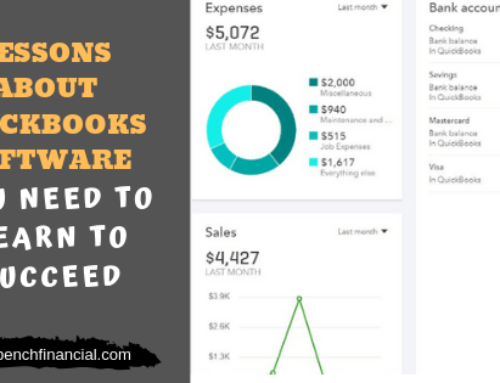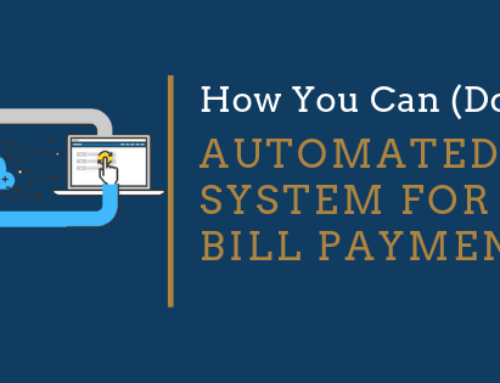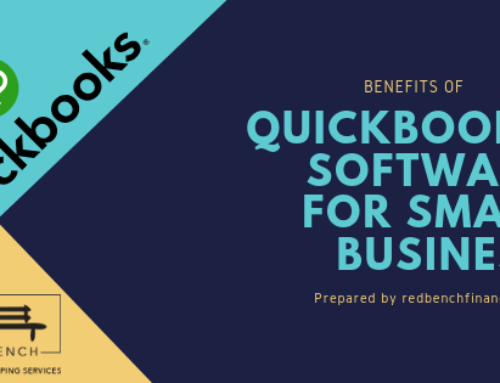It may be a truism, but it’s still helpful – if you fail to plan, you plan to fail. When it comes to small business tax preparation, we want to plan ahead and get organized. Without a plan, you’ll be creating all sorts of headaches for yourself in the coming months. It’s time to sit down, get organized, and commit yourself to orderly small business tax preparation. With a bit of planning and organization, you can march boldly into the year ahead.
This guide discusses many of the tasks that will get your accounting, taxes, and employee data shipshape for the next year. The checklists we’ve included will help you keep track of it all.
Part 1: The deadlines
Step One: Review 2019’s deadlines.
The first step of good planning: Know what needs to be done by when.
One of the main tasks in any new year is preparing to file your tax returns. And while taxes are more of a pain than anything else, the good news is: the deadlines are very clear.
So get familiar with the deadlines that apply to you. Then you can plan out how you will meet your tax obligations, including getting all the necessary information to your accountant. Sidenote: Accountants love clients who are on top of their taxes.
What are some key 2019 federal tax deadlines?
January 15, 2019
- Estimated tax payments for the fourth quarter of 2018 are due for individuals.
January 31, 2019
- Deadline to distribute annual forms W-2 and 1099-MISC to employees and independent contractors who worked for you in 2018.
- Transmittal form for W-2s to the Social Security Administration (Form W-3 and all W-2s).
- Transmittal form for 1099-MISC to the IRS (Form 1096, along with all 1099-MISC forms) are due.
- File form 941 for 4Q 2018 (the quarterly payroll tax withholding return). Or if you are an annual filer, the annual 2018 form 944 is due.
- Payment of remaining federal unemployment (FUTA) taxes and the Federal Unemployment Tax Report (Form 940) for 2018 are due.
- Deadline to distribute Form 1095-C to each of your full-time employees, if your business is an Applicable Large Employer (ALE) under the Affordable Care Act (ACA).
February 28, 2019
- Deadline for ALEs to file Forms 1094-C and 1095-C by paper with the IRS, under ACA.
March 15, 2019
- Tax returns for partnerships and S-corporations are due.
April 1, 2019
- Deadline to electronically file Forms 1094-C 1095-C for ALEs under the ACA.
April 15, 2019
- Tax returns for C-corporations, sole proprietors, and individuals are due.
- Estimated tax payments for the 1st quarter of 2019 are due for C-corporations and individuals.
May 15, 2019
- Tax returns for tax-exempt organizations are due.
June 17, 2019
- Estimated tax payments for the 2nd quarter of 2019 are due for C-corporations and individuals.
September 16, 2019
- Extended deadline for partnerships and S-corporations to file tax returns.
- Estimated tax payments for the 3rd quarter of 2019 are due for C-corporations and individuals.
October 15, 2019
- Extended deadline for C-corporations, sole proprietors, and individuals to file tax returns.
November 15, 2019
- Extended deadline for tax-exempt organizations to file tax returns.
December 16, 2019
- Estimated tax payments for the 4th quarter of 2019 are due for C-corporations.
January 15, 2020
- Estimated tax payments for the 4th quarter of 2019 are due for individuals.
Part 2: Put a bow on 2018
Get your books closed and get organized.
Getting ready for the future usually means doing a little work in the present. It’s important to look back, so you can appropriately plan as you look ahead.
Completing this checklist about 2018 will help you take the necessary steps to kick off 2019 right.
2018 end-of-year accounting checklist
Reconcile!
For the end of the year, it’s important to make sure your monthly financial statements reconcile (i.e., match up) to your cash and credit accounts, and that you make any adjustments as necessary. A little bit lost? Red Bench is here to help.
Review your financial statements
After you reconcile your books, it’s time to look at your profit and loss statement and your balance sheet. How’s cash flow? Whatever metrics are important to your business, it’s a good practice to review how you’re making and spending money and the financial position of your business.
Fortunately, this step is quite easy with the Xero accounting system that we use at Red Bench. Xero syncs directly with your bank account or credit card to help categorize your expenses, and perform financial analysis.
Collect W-9s from vendors
Did you use vendors this year? Web developers or designers? Social media marketers? If so, you’ll want to collect W-9 forms for them. The W-9 form can be used as a paper trail for the IRS to track your expenses, and it also helps the government keep track of vendors and their income.
Remember, for every vendor for whom you’ve paid $600 or more for services, you’re required by law to issue and complete a 1099-MISC form. The 1099 must be filled out and submitted to the IRS by January 31.
Gather and organize any necessary documentation
It’s important to gather and organize your important documentation so you can share them with your accountant. Purchases or transactions from 2018 that will impact your business in 2019 and beyond (e.g., lease agreements) will likely have contracts that your accountant will want copies of on file.
Check your payroll
A few common areas to double check during end-of-year accounting include withholding taxes for fringe benefits, deferred compensation, and end-of-year bonuses.
Take physical inventory
For businesses that sell physical goods, getting an accurate tally of your inventory is essential. You’ll want to match those numbers with your end-of-year balance sheet. It’ll also be important for your accountant to know how much you’ve spent on inventory throughout the year and its current value. If you have an annual financial statement audit performed by an outside accounting firm, they may want to observe and test count some of the inventory themselves.
Part 3: Organize tax information
2018 was a big year in the tax world
The Tax Cuts and Jobs Act (TCJA) went into effect on January 1, 2018, opening up a lot of new opportunities for small businesses. The new low corporate tax rate may have spurred you into changing your entity structure. Or maybe you qualified for the 20 percent deduction for pass-through businesses. Maybe you took advantage of the full-expensing of fixed asset purchases.
When looking at organizing for taxes, below are some initial tasks to complete, as well as a few common tax areas for business owners to consider.
My 2018/2019 tax checklist
Review your financial activity
Now’s the time to check your income statement for any red flags so you can review them with your accountant. While you can always make adjustments in the future, take time at the end of the year while everything is still fresh.
Get organized
The IRS may audit your tax filings for up to six years from the date you submit it, so it’s recommended that you keep records for at least that long. Most accounting software providers can even help you categorize your expenses automatically. Red Bench is here to make sure that your financial records are organized and easily accessible.
Review your payroll taxes
The end of the year is a great time to gross up any benefits for tax withholding purposes. For example, a company would like to pay $500 bonuses to its employees, after taxes. That means calculating the “gross” bonus figures so the taxes withheld will result in a $500 “net” bonus. Fortunately, Red Bench can help you do this.
NEW for 2019: Every October, the Social Security Administration announces the maximum amount of earnings that are subject to Social Security tax. Make sure you’re up to speed on the new maximum for 2019.
By the start of the new year, every U.S. employer should:
- Adjust their payroll systems to account for that new higher taxable wage base under the Social Security payroll tax.
- Notify affected employees that more of their paychecks will be subject to Social Security withholding, and that they may wind up paying a bit more in taxes.
Prepare for tax deductions
Are you aware of all of the business expenses that are tax deductible? Take a look at some of the common categories below. For other deductions you may be eligible for, the IRS website has more information on credits and deductions.
Travel expenses
Do you travel frequently for work? If so, you may be eligible to deduct the cost of the trip, including plane fare, lodging, meals, and other incidental expenses. For details, check out IRS Publication 463.
Home office deduction
Some businesses qualify for the home office deduction. The IRS provides two methods for calculating your home office deduction: simplified and regular.
With the simplified option, you’ll have to see if you qualify for the deduction. If you meet the two main criteria, 1) Regular and Exclusive Use and 2) Principal Place of Your Business, then your business is eligible. The IRS website has lots more information on the Home Office deduction.
Vehicle and mileage deduction
For some small business owners, the IRS allows you to deduct your mileage based on two methods: actual cost or standard mileage rate.
The actual cost method requires you to keep detailed records of your business-related expenses, which is prohibitively difficult for many of us. If you choose to take the standard mileage method, the standard rate is 54.5 cents per mile for business miles driven in 2018.
In addition to mileage, you may deduct additional costs like parking fees and tolls. IRS Publication 463 has more information.
Part 4: Confirm employee data
Who are your employees?
As businesses grow, it’s crucial to ensure employee classifications and data are kept current. In preparation for each new year, all employee records, compensation, and benefits should be updated so that the correct tax forms can be prepared and submitted. The same goes for contractors. Struggling to keep it all straight? Let Red Bench help.
We put together the following checklist to help you prepare employees and contractors for the end of the year.
My 2018 end-of-year employee checklist
Verify your employee data
That means your employee’s
- Full name
- Address
- Social Security number
- Then file their W-2
It’s crucial to review employee data at the end of the year, particularly names, addresses, and Social Security numbers. Improperly filing could lead to penalties for each W-2. Check with your employees to make sure their information is correct. The deadline to furnish the W-2 is January 31.
If you’re still not certain about your employee’s Social Security number or just want to get it verified, the IRS provides employers with the Social Security Number Verification Service (SSNVS) to minimize employee name and SSN mismatches.
IMPORTANT REMINDER: Don’t forget to verify your employee data for both active and terminated employees.
Review and verify employee benefit information, such as:
- Retirement plan eligibility
- Health benefits (and imputed wages)
- Other benefits
- Sick time
- Vacation time
- Deferred compensation
We often set and forget employee benefits, so the end of the year is the perfect time to verify your employees’ benefits information before starting a new year.
For most retirement benefit information, like 401(k)s, provide the required communications to employees. If your company matches retirement contributions, remind your employees to fully fund their plan by the year-end in order to take full advantage of the tax benefits.
For health benefits, confirm that your employees have selected and contributed to their health care plans. For employees using a Flexible Spending Account (FSA), remind them to spend money before the end of the year. Lots of FSAs don’t allow you to rollover unspent funds to next year (aka “use it or lose it”). Lately, more employers have opted for a $500 carryover option, so if yours has one, remind employees of that, too.
If you’ve offered fringe benefits to employees, you’ll want to make sure you’ve withheld taxes for any taxable fringe benefits your employees have received throughout the year. Examples include:
- Moving expense reimbursements (Starting in 2018)
- Personal use of a company car
Some of these benefits may be considered imputed wages. An imputed wage is additional income typically associated with a service. A popular form of imputed wages that requires an end-of-year adjustment is group term taxable life insurance coverage over $50,000.
For more benefits-related information, check out SHRM’s Year-End Checklist for Retirement and Health Plan Sponsors.
Be sure to confirm all sick and vacation time spent by your employees. If your employee has sick pay, you’ll want to make sure it’s been withheld properly.
Deferred compensation, such as stock options, can also be tricky. Your employee’s compensation may be taxed this year if they do not meet the valuation requirements of Section 409A. If stock options are a part of your employees’ compensation packages, get with your accountant so you stay in compliance.
Verify your contractor information, including their:
- Name
- Address
- Identification number
- Then file the 1099
To make things easy on yourself, keep all of your contractor information in one place. Like with employees, you’ll want to verify your contractor’s basic information. Their ID can be a:
- Social Security Number (SSN)
- Individual Taxpayer Identification Number (ITIN)
- Adoption Taxpayer Identification Number (ATIN) or
- Employer Identification Number (EIN)
Good news: Overwhelmed by forms like W-2’s and 1099’s? We can help. Red Bench’s payroll services can save you a great deal of time and headaches.
End-of-year extras
- Get consent from your employees to receive their W-2s electronically.
- Notify employees who had no withholding tax, or who earned less than $54,884 that they may be eligible for the Earned Income Credit.
- Grant year-end employee bonuses (if any).
- Appreciate your team!
A great way to prepare for next year is to celebrate the successes of the current one. This is a popular time to give bonuses, throw holiday parties, and appreciate your team. If you plan on giving employees bonuses, don’t forget to gross up the amounts for the taxes to be withheld, if you’ve promised to award an exact amount.
Boom! You’re ready for the next year.
With a little guidance from these handy checklists, your end-of-year accounting, tax preparation, and employee data will be ready for 2019. After checking off each step, Red Bench can make it even easier to follow compliance requirements by automating the most complicated and stressful tasks.
As always, we encourage you to reach out to your accountant to confirm that you’ve successfully wrapped up 2018 and are ready to tackle next year. Don’t have anyone helping you with your books? Talk to Red Bench today about simplifying your bookkeeping!
See you in 2019!









